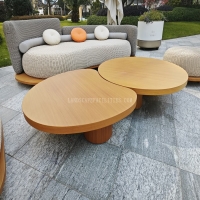Welcome to the website for landscape facilities products and knowledge.
How do landscape chairs address the need for lightweight yet stable bases to prevent tipping?
Landscape chairs are designed to meet the dual demands of portability and stability, ensuring they remain secure in outdoor environments without sacrificing ease of movement. To address the need for lightweight yet stable bases, manufacturers employ innovative materials and engineering techniques.
1. Material Selection: High-grade aluminum, reinforced plastics, or composite materials are often used to reduce weight while maintaining structural integrity. These materials resist corrosion and weathering, making them ideal for outdoor use.
2. Base Design: Many landscape chairs feature widened or weighted bases to lower the center of gravity, reducing the risk of tipping. Some models incorporate splayed legs or cross-bracing for added stability.
3. Surface Adaptation: Non-slip feet or rubberized coatings help grip uneven terrain, preventing accidental shifts. This is particularly useful on slopes or wet surfaces.
4. Balanced Weight Distribution: Ergonomically designed frames evenly distribute user weight, minimizing instability during use.
By combining these elements, landscape chairs offer a practical solution for outdoor seating—light enough to move easily yet stable enough to stay firmly in place. Whether for gardens, patios, or public spaces, these chairs prioritize safety without compromising convenience.
Related search:

Recommendation
Elliptical metal outdoor table with nested design, resembling wood grain, round table